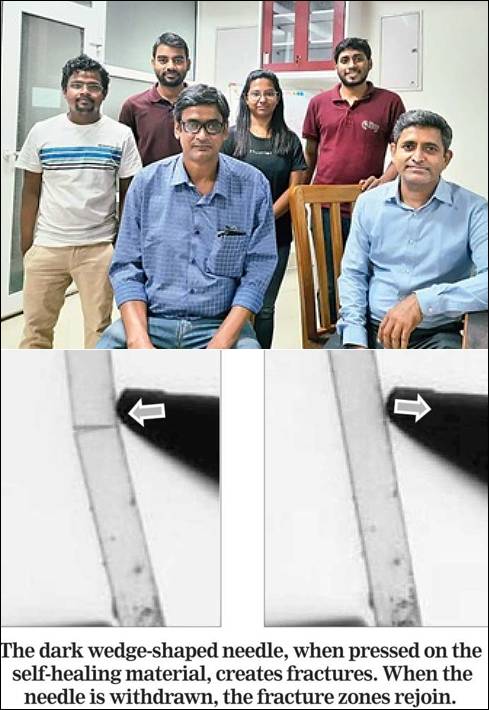
Photo Top: The IISER-IIT-K team: (Seated) Nirmalya Ghosh and C Malla Reddy; (standing from left) Surojit Bhunia, Susobhan Das, Ishita Ghosh and Saikat Mondal
July 23 2021: Researchers from the Indian Institute of Science Education and Research (IISER), Calcutta, and the Indian Institute of Technology (IIT), Kharagpur, have synthesised an organic crystalline material with a unique molecular structure that spontaneously repairs itself when damaged, The Telegraph reports. This makes it the world's hardest self healing material
The scientists used a needle to trigger mild to severe cracks in a segment of the material and watched as the cracks automatically reversed themselves within a fraction of a second after the needle pressure was withdrawn.
Self-healing materials have been under study worldwide for over three decades and have entered into engineering applications, mainly for wear-resistance in the construction, automotive and aerospace industries.But almost all known self-healing materials are soft and amorphous — having an internal structure marked by irregularities and defects — and require some external stimulus such as heat, light or a chemical agent to heal themselves.“Our self-healing material is 10 times harder than others,” said Chilla Malla Reddy, a chemical sciences professor at the IISER who led the research, “and it has a crystalline structure, a well-ordered internal structure, the favoured structure in most electronics and optical applications.”
The work has been reported in the 16 July 2021 issue of the US journal Science: Autonomous self-repair in piezoelectric molecular crystals where it is summarised as follows:
The ability to autonomously restore shape or self-heal are useful properties that have been incorporated into a range of materials, including metals and polymers. Bhunia et al. found that both of these abilities could be achieved in piezoelectric molecular crystals, specifically bipyrazole organic crystals. When the crystals are fractured, they develop charged surfaces that attract each other, drawing the two faces together to enable self-repair as long as they remain within a critical distance of each other. The effect can also be seen in other noncentrosymmetric piezoelectric crystals.